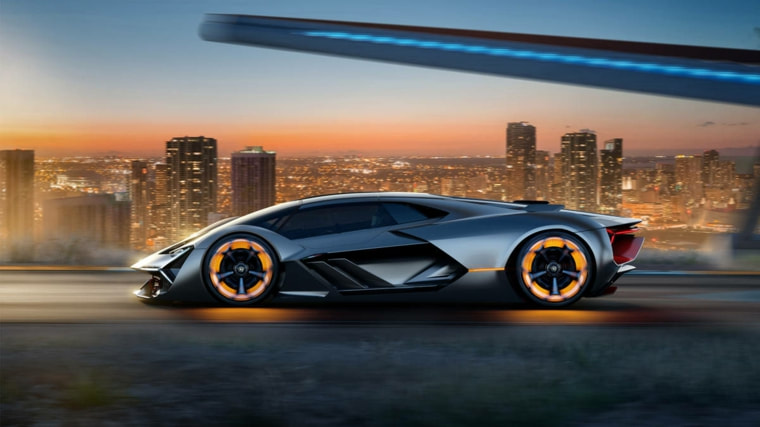The Terzo Millennio, which means third millennium, is totally electric, with engines on the wheels that provide power and the ability to control the amount of torque that each wheel has. However, Lamborghini has not specified how much torque the engines produce.
Two main approaches are present: next-generation energy storage systems and future innovative materials. Lamborghini worked with two separate MIT laboratories on both, financing the projects themselves. The first is worked by the Dinca Research Lab, named and directed by the chemistry professor Mircea Dinca, while the second is treated by the Mechanosynthesis Group, with the mechanical engineering professor Anastasios John Hart directing the department. recovery of kinetic energy to give extra power
A kinetic energy recovery system is also used to give extra power to the light supercar, and a supercapacitor is foreseen for the model, although the brand admits that the battery technology is not currently where it should be. Its objective is to develop a supercapacitor to give a jump in the power density. MIT is not working on this element, however. The structural components are duplicated like the car's battery
The structural components are duplicated as the automobile battery to lose weight, another area where Lamborghini alleges that current technology is not up to par. The rest of the car is made of carbon fiber, although the sensors allow the car to monitor the structural integrity of its own body, detecting damage and cracks in the body. The car can then "self-calibrate", thanks to chamicals in the micro-channels of the carbon fiber body. Lamborghini's work with MIT seeks to develop new and alternative methods to produce carbon fiber. The body of the car can adapt to aerodynamics
Without a traditional four-wheel drive train running along the car, Lamborghini was able to design the body of the car so that it could adapt to aerodynamics. This is another outstanding area for further development.
Two main approaches are present: next-generation energy storage systems and future innovative materials. Lamborghini worked with two separate MIT laboratories on both, financing the projects themselves. The first is worked by the Dinca Research Lab, named and directed by the chemistry professor Mircea Dinca, while the second is treated by the Mechanosynthesis Group, with the mechanical engineering professor Anastasios John Hart directing the department. recovery of kinetic energy to give extra power
A kinetic energy recovery system is also used to give extra power to the light supercar, and a supercapacitor is foreseen for the model, although the brand admits that the battery technology is not currently where it should be. Its objective is to develop a supercapacitor to give a jump in the power density. MIT is not working on this element, however. The structural components are duplicated like the car's battery
The structural components are duplicated as the automobile battery to lose weight, another area where Lamborghini alleges that current technology is not up to par. The rest of the car is made of carbon fiber, although the sensors allow the car to monitor the structural integrity of its own body, detecting damage and cracks in the body. The car can then "self-calibrate", thanks to chamicals in the micro-channels of the carbon fiber body. Lamborghini's work with MIT seeks to develop new and alternative methods to produce carbon fiber. The body of the car can adapt to aerodynamics
Without a traditional four-wheel drive train running along the car, Lamborghini was able to design the body of the car so that it could adapt to aerodynamics. This is another outstanding area for further development.




 RSS Feed
RSS Feed